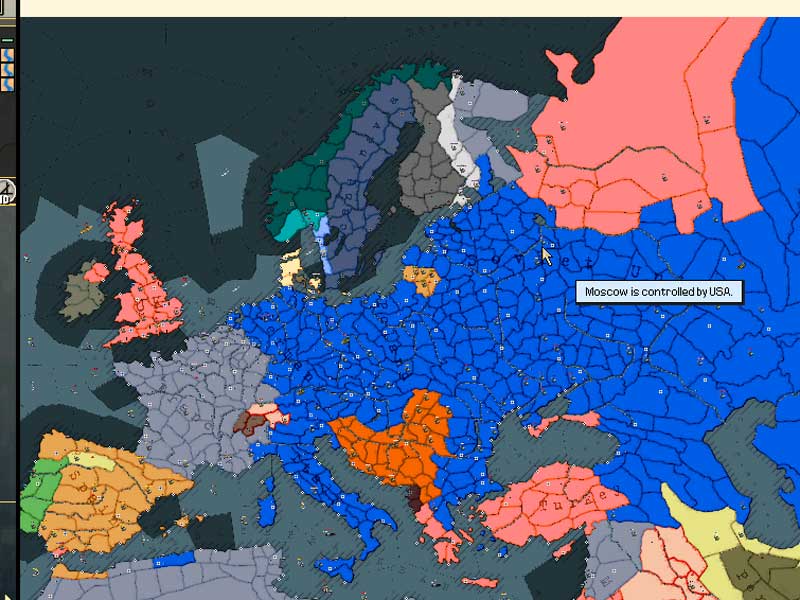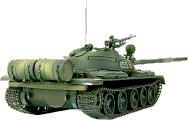Battleship Bismarck
Bismarck was vulnerable to hits above the armoured deck which could have serious impact:. The fire control rooms (for all types of weapons) AND damage control rooms, were all at least doubled and all under the armoured deck together with the propulsion systems. This means that the "vitals" above the armoured deck only consisted of cables leading from the bridges (navigation) and the cables from the 3 directors towards the fire control rooms. The cables probably ran through the 2 armoured pipes leading from the 3 director posts towards the main armour deck.
Conclusion on armour: the protection system of the Bismarck was almost perfect at duels < 20.000 yards. At greater ranges the 2 thin decks could be penetrated threatening the vitals.
At all ranges there was a threat of diving shells, which could penetrate under the belt or penetrate the weather deck, deflect downwards, to penetrate the main armour deck.
The vulnerability of the two too close placed rudders. The rudders could not be placed more apart, since the hull aft was to shallow.
IOWA had there a more broad hull and 4 propellers and therefore the 2 rudders were more placed apart than on the other battleship classes.
IOWA would probably have fared better under the same harsh situations of the Bismarck: having a greater range, speed, better arrangement of the rudders, thicker armour deck, better under water protection, better and more stable radars which could be used for accurate shooting, better and stronger AA and stronger armoured main turrets. IOWA would probably have succeed in escaping her enemies, but like Bismarck also be unable to ward of all Swordfish attacks. And when confronted by R & KGV the IOWA was able to knock at least Rodney completely out, since you all have pointed out that the AON armour and short belt left may vitals (bridge) AND all directors, like Bismarck, open for destruction.
Last but not least: Bismarck fared bad in her last engagement. She was mortally hit very early in the battle which knocked out her main director (on top of the combat-tower) AND silenced miraculously both forward heavy gun towers!!! How exactly is still the question. This early bad-luck coupled with a doomed and exhausted crew, pessimistic admiral, her own erratic course and slow speed: all explain why after the first 15 minutes the defence of the Bismarck collapsed so quick. If Bismarck had a stable course and high speed she could have placed destructive early hits on Rodney like she did on Hood, perhaps destroying the un protected command bridge or knocking out a big turret. The course of the battle then could be totally different.........
Conclusions: Bismarck was a very big modern battleship with a beautiful sharp design, large and strong armament, sophisticated equipment, large novice crew, 2 captains.... an armour scheme which protected as much as possible with a compromising formula: 2 thin armour decks meant risks on distances > 20.000 yards. Steep diving shells under the belt too.
If under heavy fire the superstructure would suffer but not her vital direction centres nor her machinery. The 3 main directors on top of the ship could never be protected for destructive hits.... and when the ship was targeted by 70 (2 x 10 + 9 + 8 + 8) heavy shells per minute at least 5-7 (10%) would hit after the thirst 10-12 minutes of practise shooting.
If you compute the probability that the 3 rangefinders are hit under this barrage you will find out that they are hit after 15, 20 and 25 minutes of fire. So all were hit at 8.47 + 25 minutes = 9. 02 (top), 9.07 (on conning tower) and 9.12 (aft). This is exactly what happened.
Yamashiro, Yamato and Musashi
To Yamashiro, Yamato or Musashi. The latter were strafed, bombed and torpedoed. On Bismarck about 1000 of her crew died (4 main turrets, all secondary turrets, AA positions, Conning-tower, 3 director stations, damage control parties, 4 hits through belt in mess, canteen. On Musashi and Yamato there were hundreds of casualties because of the air attacks but not a 1000 deaths. The heavy casulaties came when Yamato blew up and Musashi slowly sank by the bow in the deepest Sea on Earth. amashiro was mortally torpedoed by MTB's and destroyers before reaching the US Battleships. Fuso with her Samurai like (and very high) Pagoda mast steamed in the very mouth of destruction. Both old battleships were lost in a short time span to overwhelming damage and heavy loss of life, but not a protracted ordeal like the tough and very well armoured and thoroughly subdivided modern Bismarck had to sustain: from 8.47 to 10. 35: almost 2 hours of intense fire and destruction.
If looking to all the articles about the Bismarck, the surveys in and round the wreck the Bismarck is less weak (or badly armoured) than I first thought. Richelieu, the King George V class and the Littorio's would not have done better in every circumstance of the Bismarck if equipped with the same novice crew and 2 captains on one ship. Nor would have done the 2 Nelsons or the 2 Washingtons. Slightly better chances would have the South Dakota's and the Yamato's and definitely better chances would have the Iowa's. There designs showed less weaknesses and they also had better fire controls and a better armament.
To give the ranking:
Best and strongest battleships were the Iowa's and Yamato's; followed
by the South Dakota's, Bismarck's, Richelieu and the Washington's
Third come the KGV's, Littorio's and Nelsons
Fourth then the Scharnhorst's, Dunkerque's and Alaska's.
Robert Veenenberg, Vinkeveen, The Netherlands
rolivire@casema.nl

 Home
Home Hearts of Iron
Hearts of Iron








 French Military Victories...
French Military Victories...